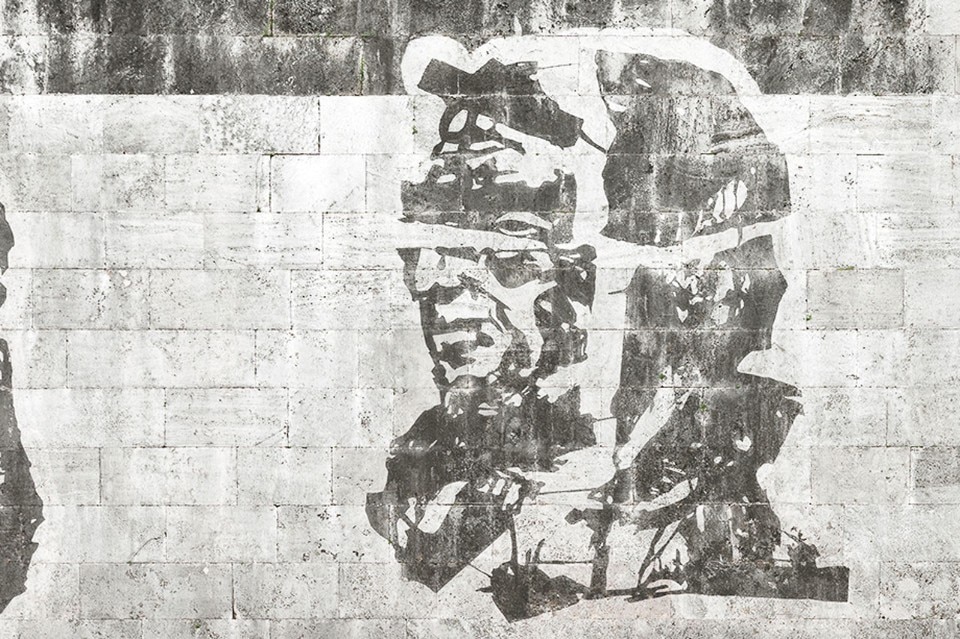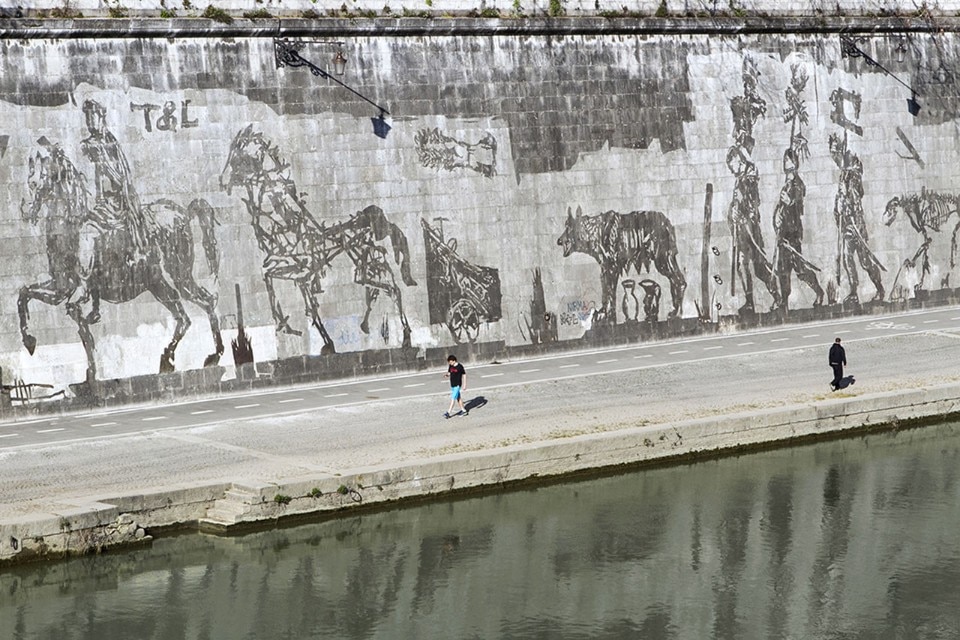
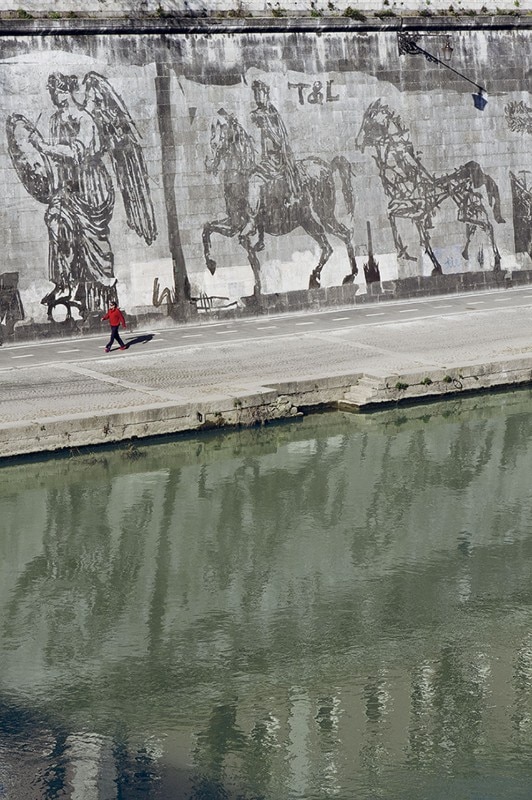
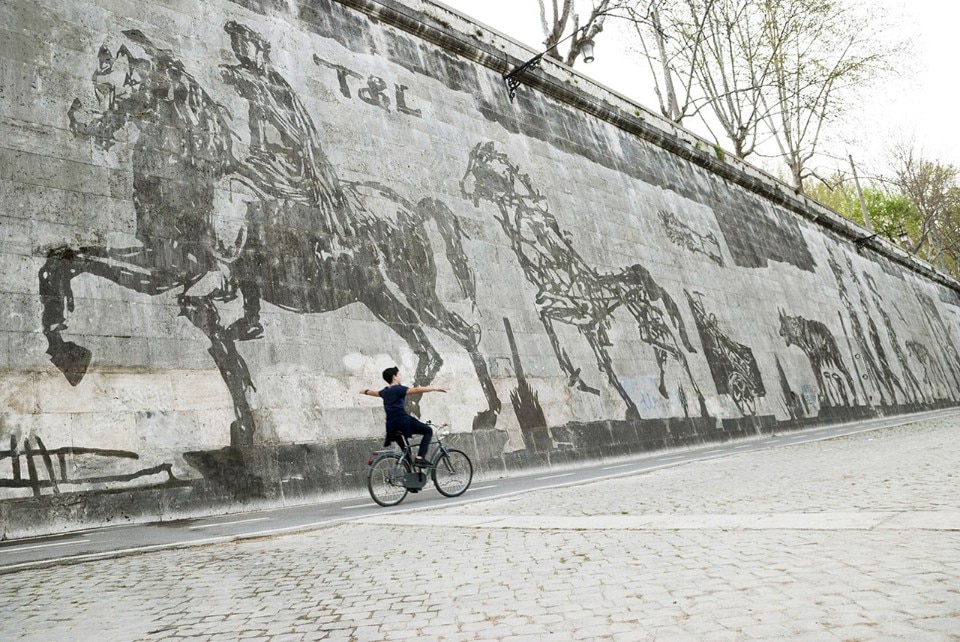
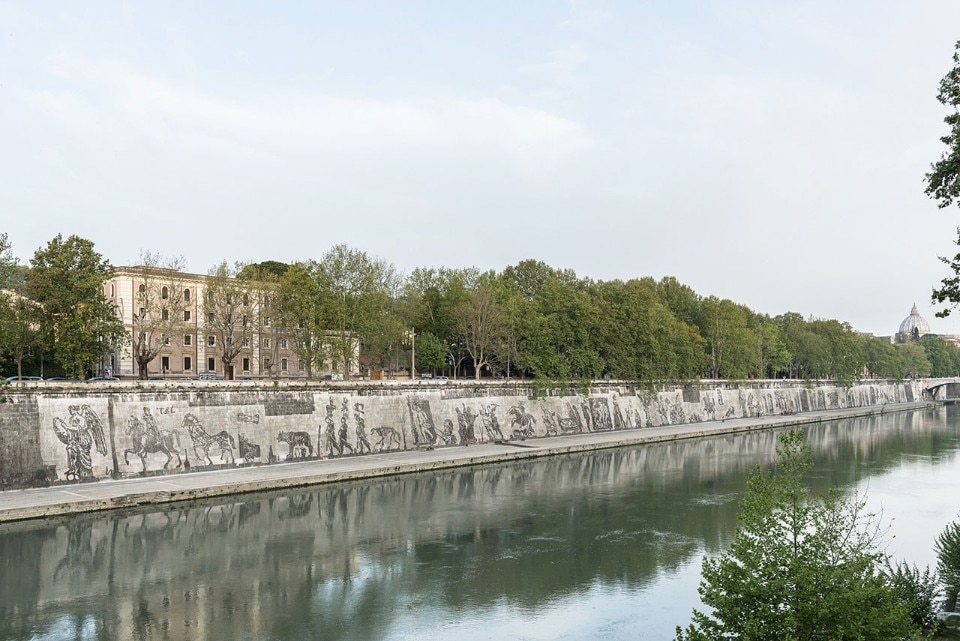
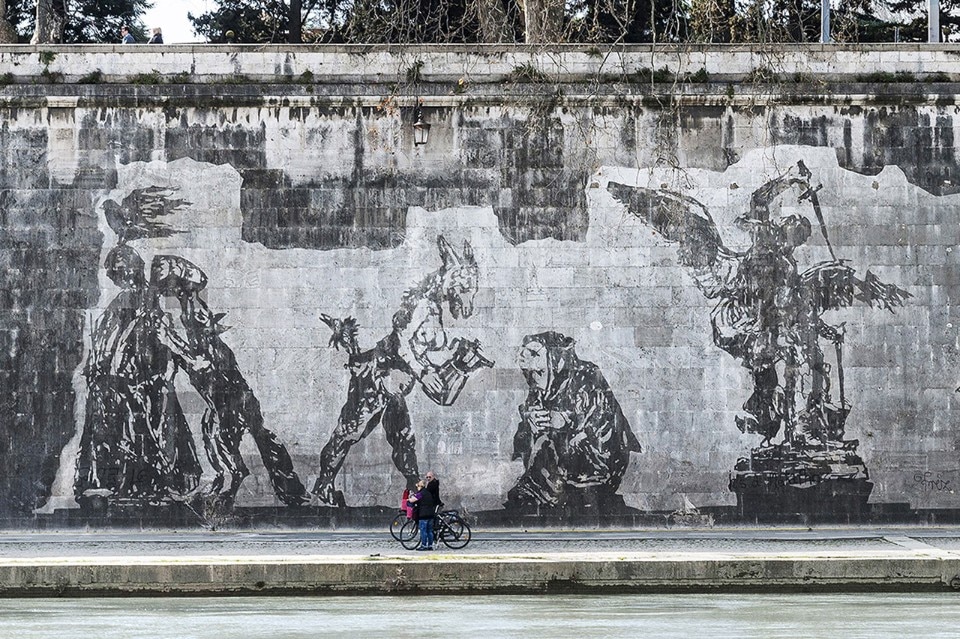
Kentridge has therefore managed to capture the very essence of the city, to represent the sense of passing time, of the cultures and eras which follow one another, of the richness of stratification; understanding how much Rome is a sophisticated example of beauty born of contamination.
The theme of superimposition and grafting is related to the artist’s favourite practice, animated drawing. His most famous works, Drawings for projection, are films which develop on a single sheet where, through the use of malleable techniques such as charcoal, the artist creates, subtracts, adds and cancels figures and characters. A powerful and pre-verbal form of expression, made of images which transform and change at the speed of thought, where the hand and the mind are directly connected and where a body can become a mountain or the palm of a hand becomes a lake. Triumphs and Laments is also tied to metamorphosis, not only because its figures are often shown in change and transformation, but for its gradual process of cancellation which recalls the running time of a film. The cinema and its narrative methods are key points of the artist’s poetry which, in this work, recall and re-elaborate our grand masters.
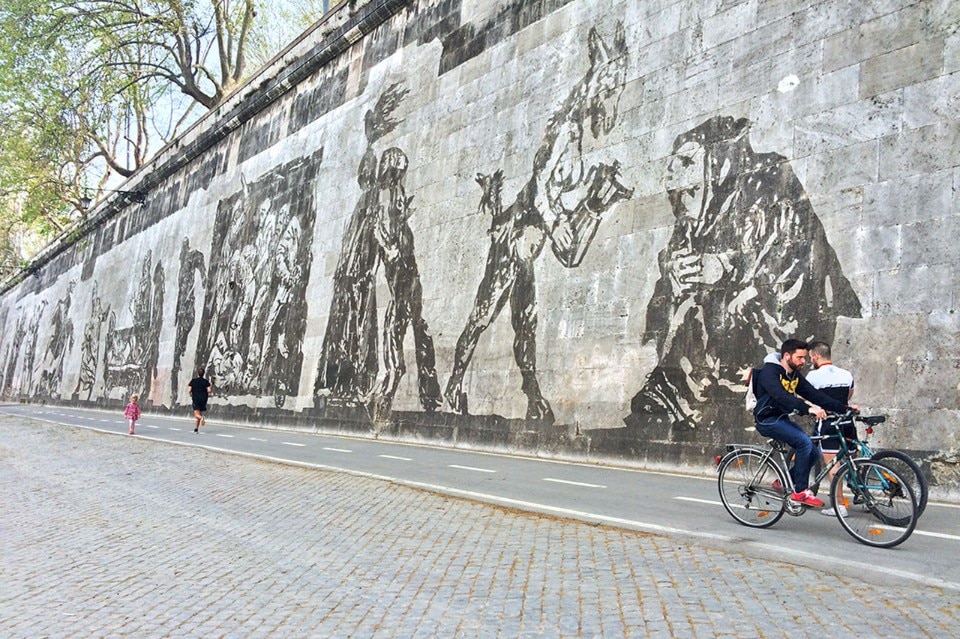
Thus, Fellini is remembered in La dolce vita, however Anita and Marcello are no longer depicted embracing in the Trevi fountain, but in an old bathtub. Rossellini on the other hand is cited to the letter, the symbolic image of Anna Magnani dead in Roma città aperta is the same, while Pasolini and his massacred body become metaphors for a universal pain and recall the many assassinated men seen by Kentridge in Africa during the years of apartheid and which always return to his works, where political reflection is an essential characteristic.
In addition to the cinema, theatre and dance are fundamental forms of expression for this great contemporary master. One must not forget that he studied them, together with mime, from a very early age, and has worked as both actor and director. Music has also played a central role in his poetry of contamination among the arts.
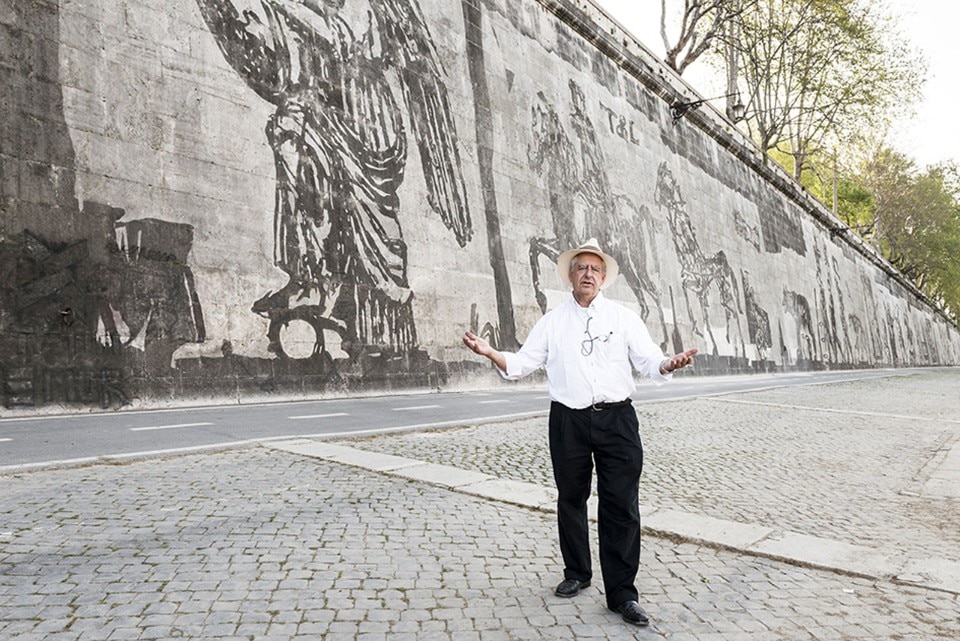
William Kentridge: Triumphs & Laments
A project for Rome
piazza Tevere, Rome

